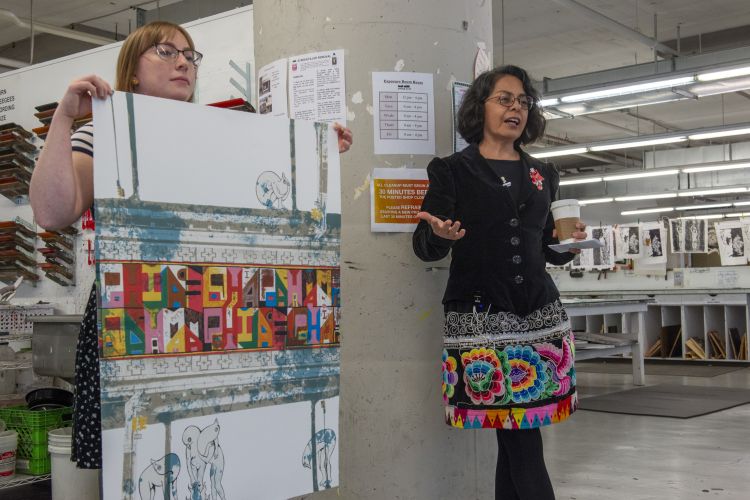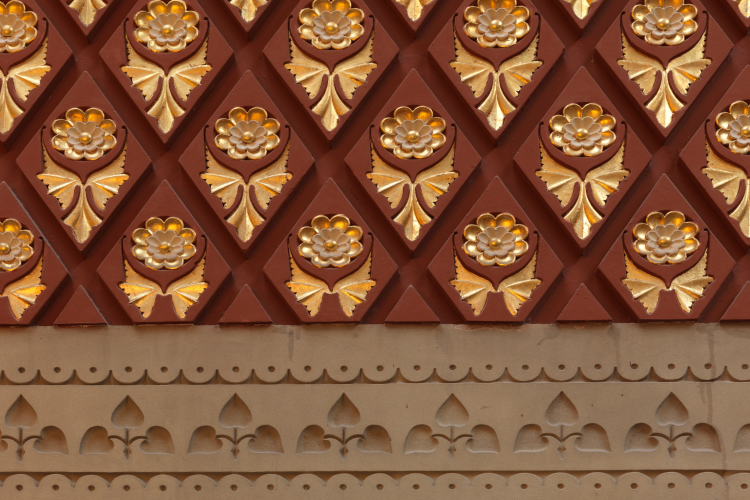STORIES FROM PAFA
Expanding Creative Horizons Through Liberal Arts Courses
The Zoom chat is filled with students cheering on each other on the final day of PAFA’s liberal arts course for high school students entitled, “The Art of Surviving the Apocalypse,” taught by Dr. Li Sumpter. 14 students from 6 states, with a range of backgrounds and identities, forged a community of online learning.
This past fall, PAFA’s Pre-College program introduced liberal arts classes, offering high school students the opportunity to explore, analyze and interpret big questions in college-style seminars. Students were able to explore a range of topics through classes such as “The Art of Surviving the Apocalypse,” “The Personal Essay,” and “Public Art in America”.
In Dr. Li’s class, students drew on what they learned about the literary genre of apocalypse to create their own “story worlds” with visual cards and written descriptions, for their final project. Sonny Lopez, who attends Steinert High School (Trenton, NJ), was drawn to the class by the promise of college credit and topic. They remarked that “being able just to discuss such a specific [topic] was very helpful. It motivated me to start taking my own story more seriously.”
The idea of taking an online course in addition to a student’s regular coursework was a challenge, but as Central High School student Amelia Jeoung remarked, “I was hesitant because I'm not the biggest fan of online learning, especially with Zoom fatigue, but I definitely appreciate how the class was handled.”
Sonny noted that this class was far more discussion-based than their virtual school classes, which allowed for the development of a sense of community that was otherwise missing this year. Both agreed Dr. Sumpter’s enthusiasm and ability to lead an engaging discussion enabled the class to blossom.
Sonny and Amelia are both interested in studying art in college and shared how a deeper understanding of liberal arts expanded their artistic horizons, emboldening them to develop their creative visions more fully. Each student kept returning to how they were able to personally grow while connecting with a community of diverse, yet like-minded peers.
—Susannah Fishman (sfishman@pafa.org)
In Dr. Li Sumpter’s class, “The Art of Surviving the Apocalypse,” students were asked to create a tarot card with corresponding text. Participants were asked to consider archetypes, motifs, and symbols to illustrate the element.
Amelia Jeoung
 I envisioned someone who had the capability to do whatever they wanted, whenever they wanted. Her glowing eyes and the smoke around her are meant to indicate her power. I took inspiration from religious works of art in history in the sun and its rays in the background to make her seem divine and ethereal. However, if I were to redo the illustration, I would antagonize the woman more. She is effectively depicted as all powerful and celestial, but without the text below it's unclear that she is the villain.
I envisioned someone who had the capability to do whatever they wanted, whenever they wanted. Her glowing eyes and the smoke around her are meant to indicate her power. I took inspiration from religious works of art in history in the sun and its rays in the background to make her seem divine and ethereal. However, if I were to redo the illustration, I would antagonize the woman more. She is effectively depicted as all powerful and celestial, but without the text below it's unclear that she is the villain.
In my paragraphs I wrote, "it was easy to forget the real enemy, all the way at the top." A lot of The Oppressor's influence comes from her deceptive radiance. It's easy to be bent to her will and serve her. Only after a closer look will you notice the darkness seeping out from below her dress. Most of the damage that she inflicts upon the people stem from her selfishness and apathy, her lack of action for the people suffering below.
Sonny Lopez
 My tarot card centers around the gun; specifically the gun that is used by Reverend Olamina [from Octavia Butler’s Parable of the Sower] at the beginning of the story as well as the gun as a symbol in the story as a whole. I chose to depict the scene where Reverend Olamina has to shoot a wild dog in order to protect the people he is travelling with because it represents both the light and dark traits on the card (protection and pain). When Reverend Olamina shoots the dog he is preventing it from harming the people he is with, while at the same time harming both the dog and his daughter Lauren (through her hyperempathy)… Guns represent the broad idea of violence and the thoughtlessness that can be behind it, while also recognizing how in some desperate scenarios it can become vital to survival.
My tarot card centers around the gun; specifically the gun that is used by Reverend Olamina [from Octavia Butler’s Parable of the Sower] at the beginning of the story as well as the gun as a symbol in the story as a whole. I chose to depict the scene where Reverend Olamina has to shoot a wild dog in order to protect the people he is travelling with because it represents both the light and dark traits on the card (protection and pain). When Reverend Olamina shoots the dog he is preventing it from harming the people he is with, while at the same time harming both the dog and his daughter Lauren (through her hyperempathy)… Guns represent the broad idea of violence and the thoughtlessness that can be behind it, while also recognizing how in some desperate scenarios it can become vital to survival.


